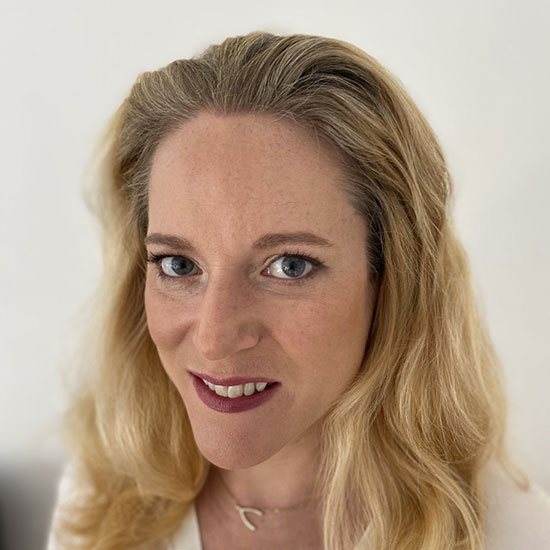How CIOs Can Build Dynamic Duos with CFOs: An interview with Hampton Shive, Strategic Advisor
Former Tambellini Author

Higher education CIOs know that the long-term success of any institution-wide technology project depends on their effectiveness in building a broad coalition of support across a vast array of leaders and stakeholders with diverse needs and goals.
Depending on the focus of any technology initiative, CIOs will understandably need to prioritize garnering buy-in from the specific departments and teams that are most directly affected first. But before any large-scale IT project can get off the ground, the one leadership stakeholder CIOs always need to bring on board is the chief financial officer (CFO). After all, they are a key decision maker in any significant purchase, and technology purchases tend to be major expenses.
With technology playing a more prominent role in every facet of institutional operations and comprising bigger shares of the budget, it is more crucial than ever for CIOs to build productive and symbiotic partnerships with their CFOs.
Hampton Shive is one of Tambellini Group’s strategic advisors and has firsthand experience navigating the dynamics between CIOs and CFOs. In addition to his daily work helping Tambellini Group’s C-level members define and implement their technology investment strategies, he has also previously served as a community college CIO and AVP of Business Services.
In this interview, Hampton shares his insights on how CIOs can build and improve their collaborative relationships with their CFOs—and the competitive advantages institutions can gain when their CIOs and CFOs are strategically aligned.
Q: CIOs and CFOs both occupy very influential roles at their institutions. Which one should take the lead in strengthening their collaborative partnership?
A: Every partnership is a two-way street, but the CIO should be the one to take the initiative. Information ecosystems are vast and complex and considerably different from the financial and operational domains under the CFO’s leadership. Serving as a willing and patient educator to help the CFO understand the assets, liabilities, and equity within the information ecosystem can significantly aid the institution in making informed technology investment and divestment decisions.
The ways in which similar institutions are using technology and information vary widely, and the tools and systems available are rapidly evolving, with new ones becoming available every day. There are many different ways to approach modernization projects and evaluate their success, depending on how CIOs have chosen to measure progress.
CFOs have a set of frameworks to measure financial health and performance regardless of institution or industry. Balance sheets or profit and loss statements are built, used, and audited according to standards that apply to all institutions and enterprises. A CFO at one institution can quickly assess the financial health of another institution by looking at those facts and figures because they are consistent.
But it is unreasonable to expect a CFO to be able to make a parallel assessment of their institution’s technology stack—it cannot be quantified or compared across two institutions by simply running numbers. A CFO needs more context to understand what IT needs and why they need it, and it is the CIO’s responsibility to communicate those things because they have the perspective and knowledge to do so. The CIO is thus the bridge builder.
While there are many industry and compliance standards for technology environments, the methods for quickly assessing information health are not as well defined as they are for assessing financial health. CIOs therefore have a responsibility to partner with their CFOs to ensure a shared understanding of how to execute technology investments that align to institutional strategy as well as financial and information health. The decision process for technology modernization should be grounded in this shared understanding of what characterizes solid investments and outcomes.
Q: Aside from the differences between how their worlds are structured and quantified, what else should CIOs understand about the domain of the CFO?
A: Most CFOs have inherited an outdated cost structure that does not reflect the realities of how their institutions operate today. The physical plant and on-campus experience have long been the basis for operations, but COVID quickly showed how vital the digital plant and online experience are to enabling flexibility and agility. Today’s reporting systems were not built for this new reality and often leave CFOs with limited insight into financial performance across institutional activity.
A shift from capital to operational expenditures is more complex than simply putting a transaction into a different ledger account. Capital expenditures for a new science lab or dorm are frequently easier to understand because they are a part of the physical plant, easier to conceptualize, and seen by many. This is particularly true for institutions that build their offerings primarily around an on-campus experience.
Compare that to a technology expense like a new finance, HCM, or student system. Its impact may be more far-reaching and positive than a new building, but it is harder to “see” up front. Reporting systems can also come with different options for financing major purchases, as operational and capital funding have different requirements around source, usage, and accounting.
Q: What are the biggest challenges arising between CIOs and CFOs in the current environment?
A: Money is tight. The need to make sound investment decisions for current and future relevance is greater than ever.
Most CIOs want their institutions to pick up the pace of progress on their modernization journeys and see an urgent need to replace outdated finance, HCM, and student systems with modern cloud-based ones. We know through our proprietary research that the vast majority of institutions are running outdated systems that are reaching their end of life.
At the same time, higher education CFOs are facing their toughest economic environment yet, and there is stiff competition internally for limited resources. They are trying to balance budgets and minimize risk, and their CIOs are saying, “We need to fund these major projects now because we are already behind.”
This puts CFOs in a tough position because replacing major administrative systems has also become significantly more expensive in the past couple of years, with IT talent shortages impacting both institutions and the vendors that serve them. This means extended project timelines and, of course, higher-than-anticipated costs and risks for implementing and running modern systems.
Q: How can CIOs reconcile these differing priorities and get CFOs on board?
A: First, CIOs need to understand the constraints CFOs face. Second, CIOs will be far more effective in gaining the CFO’s support as a partner when they reframe their budget requests as investment opportunities to improve the institution’s financial health as opposed to expenses to be absorbed because the CIO wants new technology tools.
Modern systems that provide improved constituent experiences and better alignment between transactional activity and a solid data management strategy can give CFOs a clearer and more realistic view of operational performance.
When making the case to CFOs for technology investments, CIOs should focus on how these systems can enable the CFO and team to more efficiently and effectively manage the full spectrum of credits and debits across the entire institution.
If the CFO can see the value of technology for operational strength, reduced risk, and improved compliance, they are more confident in making strategic investment decisions. CIOs who can explain the power and potential of these systems will win them over.
Q: You mentioned how success from a technology standpoint could be measured in various ways depending on how an institution defines it. But are there any universal signifiers of a successful partnership between CIOs and CFOs in higher education?
A: Yes. Across the board, there are two main characteristics of successful partnerships that I see:
First, the CFO has the mindset of a long-term investor because, instead of regarding the IT budget as an expense to be absorbed, they view it as an opportunity to rearchitect their business operations for the better. This shows that the CIO has effectively conveyed the ROI of technology investments and gained buy-in from the CFO.
Second, the CIO has also gained the trust of the CFO. They have done that by articulating how their strategic priorities are aligned with the same overall goals. When that happens, the CFO regularly relies on the CIO to be their key partner in identifying and evaluating technology tools that meet their objectives and solve the most pressing problems the institution is facing.
Categories
Share Article:

Other Posts From this Author:
© Copyright 2025, The Tambellini Group. All Rights Reserved.